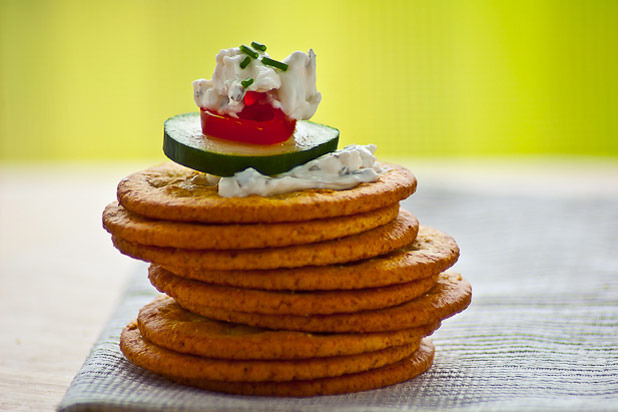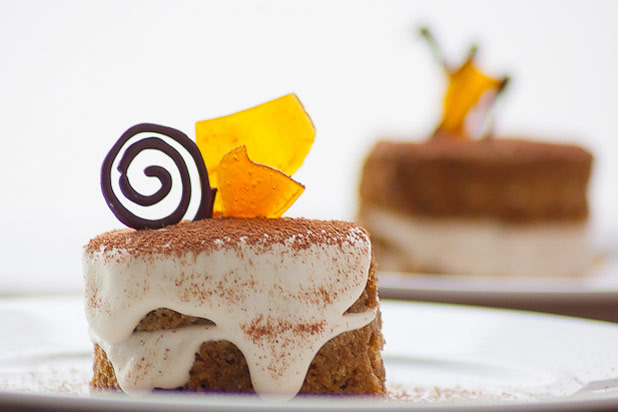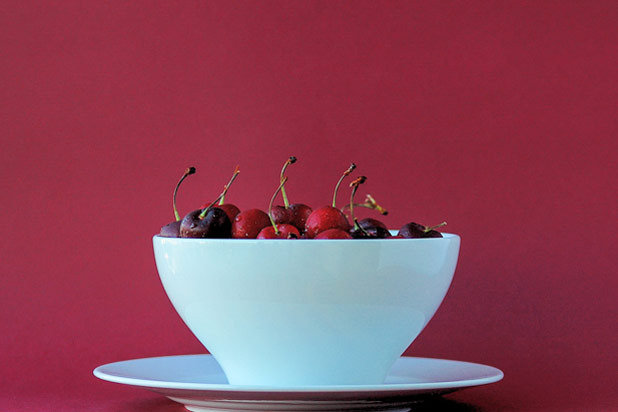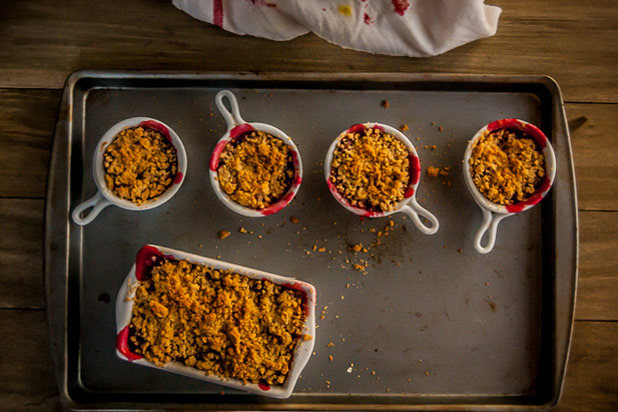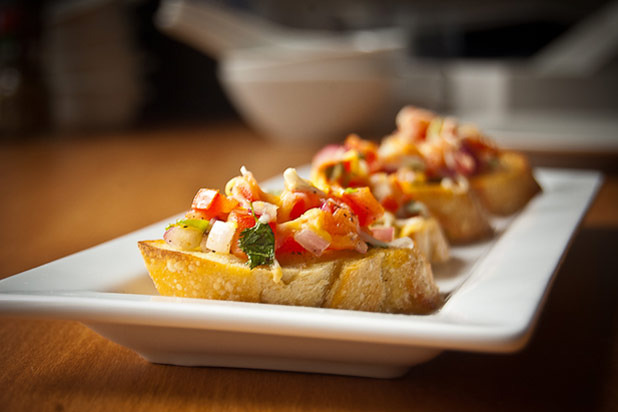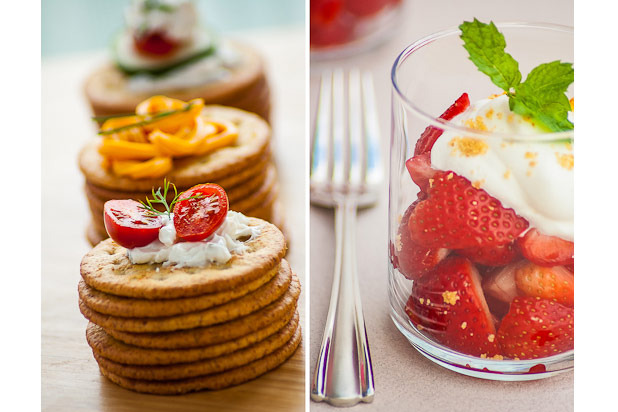Culinary Optics: In The Studio With Neel Chaudhary (Slideshow)
The Daily Meal: We know a lot about LFP, but tell us a little about the man behind the blog. How did you get into food photography?
Neel Chaudhary: As I was growing up I remember there was this cabinet in our house that had an old Russian SLR camera. My dad bought it when we were kids. It sat there year after year. And my fascination with holding it and clicking away grew every year. It was in 10th grade when I first started exploring it. It was heavy like a brick. That's when my journey started.
Growing up in India there was always a lot to photograph everywhere. In early days I was more inclined to photographing people and landscapes. In India I come from a city known for its street food and passion for food. The food streets there are massively crowded until 3 to 4 a.m. every day. Some say people of Indore don't have blood in their body but sev, pohe and jalebi — a typical Indori breakfast that you can get in every street corner of the city. That's how food came into my life — through my blood veins.
I didn't start photographing food until 2005 when I moved to the US and a good friend asked me to shoot for her Thai restaurant. At that point I was taking some decent photos of other subjects, but food seemed rather tough. Very tough.
The thought of food photography stuck with me since then. The challenge in those days, about 10 years ago, was that there was not much written about food photography. There were hardly any books.
That's when the itch to document my experiments started. Then in 2009, we — my better half and I just decided to take the plunge. LearnFoodPhotography.com started in 2009 as a result of this undying voice to share whatever little I was learning about food photography with a wider audience.
My better half has been big part of this journey and when I am taking food photos at home, she is usually styling them. She has created several props and backgrounds that I've used in photos as well.
Style
TDM: What is your personal photography style? Are you a professional food photographer or a hobbyist?
NC: I find the term professional photographer rather ambiguous. When we say professional photographer, do we mean someone who creates quality of photograph or is it about earning a living? I have a day job that is my main source of income and some portion of my income does come from food photography. I do shoot assignments and projects for clients.
Personally my food photography style and preference change frequently. There are days when I get stuck on messy photos and then there are times when "clean and elegant" seems to be the word of the day.
My relation to photography has been very deep and profound. I often find photography very much like meditation. Give me a camera and I wouldn't care about anything else. Me, my camera, and my subject. That is it. Over the years this connection has become very strong and continues to grow.
I think main reason for this is that I've not "categorized" myself and food photography in a certain "style." Just giving myself this freedom has been creatively amazing. It may completely change in the future, who knows.
Vision
TDM: How did you think of LFP? What vision did you have for LFP at the time you started the blog? Has the blog lived up to the vision?
NC: As you know by now, LFP started as a source to share food photography tips. I am often tempted to include a recipe or two but have focused hard to keep this blog solely for food photography.
LFP started as a very small experiment. I am a photographer and have been photographing for quite some time. But writing was something very new. I wasn't even sure if I would like to write rather than just take photographs. I often struggle with writing, even now.
LFP has grown beyond my imagination. With where we are now in the journey I can say that we've achieved some success and there is lot more left to be done. There are many friends we need to educate and ask them to please not use that on-camera flash or not to get so close of your food that it feels like you are seeing a microorganism through a microscope.
As I've said before elsewhere, every time I see a photo taken with on-camera flash, I cry a little. I can't sleep at night. (Okay! that's a joke!) We need a world without on-camera flash photos. Wouldn't that be a great world to live in?
Guests on the Blog
TDM: How do you pick your guests? How do you formulate the questions? Has anyone ever refused to be featured on your blog?
NC: The purpose of doing the food photography podcast is to teach a certain subject to those learning food photography and styling. Based on that we started creating list of top food photographers and stylists. We continuously add new guests to the list.
We've had great support from top food photographers and stylists for doing this. From National Geographic photographers to New York Times food photographers, from Cooking Light's chief food stylist to food photography and food styling book authors. We've been very lucky to have a guest who has been a judge on Top Chef. We've had dozens of interviews that are very educational and inspirational.
I think the key to formulating good questions is to learn about your guests before the interview. We read about them, a lot. We read every single piece we can find about them. Yes, it takes couple of hours to do that. But then the conversation in the interview is very rich and satisfying.
There are certainly many other food photographers that we'd like to invite. These professionals are very busy and getting two hours or so is not very easy. We've been lucky and thankful that our requests are usually accepted.
Pretty soon we will start the new season of Food Photography Podcast, where you can expect many more well-known names to join us on this journey.
Skills
TDM: You must have seen a lot of food photographs, what does it take to make an extraordinary photograph?
NC: "Wow!! I am really moved by the megapixels of this photo!" Have you ever heard that? Or how about "The sharpness of this photo makes me cry"?
The technical jargon does not matter. A good photograph is not about buying a new camera or lens or increasing the megapixels in your camera bag.
The key to an extraordinary food photograph is whether the photograph evokes positive emotions in the audience. I say positive emotions because, at the very basic level, that is what food photography is supposed to do. A good food photo needs to invite you to experience the food.
I've talked about a "photo of" something and a "photo about" something on LFP. In my opinion, extraordinary photos are "about something." A technically perfect photo will not move you if the story is absent. So telling the story is important. The elements of this story are created by all aspects of photography — camera angle, framing, the light and shadows, and every decision you make while taking a photo.
Getting it Right
TDM: You have a whole section on your blog on specific aspects of food photography like, "How I shot black on black," or "How I shot sushi," among so many images of sushi or black food on black background or white on white, how do you pick which photograph/photographer to be featured? How many images do you study before you know which is the right one for your post?
NC: We look for images in various places like food blogs or Pinterest and other photography sites. We are looking for something that has not been published before on LFP. Once we find the subject/topic we then list out a couple of images that we like and contact the most preferred photographer. There is no set number of images that we study. Sometimes it is 10, sometimes a large number like 80. We keep looking until we find a good image.
Again, this certainly takes several hours, from picking the right image to contacting them, asking them to write about the image, and then publishing it.
Inspiration
TDM: Do you have a favorite food photographer? Who and what draws you to his/her work?
NC: This is really a challenging question because the list is long. In short, the list of photographers and stylists that we've interviewed would all fall in this category. Each one of them has something interesting to teach us and that's what draws me to their work.
Penny De Los Santos taught the listeners about standing out as a food photographer, Matt Armendariz taught us to bring "what" before "how." So many amazing food photographers taught us everything from lighting to prop styling. The list is endless.
Over the years, I've learned that my inspiration is coming from everywhere. Even though I am a photographer, painters inspire me. Movies inspire me as a food photographer. As I said, the list is too long.
Types of Photography
TDM: How do you think food and lifestyle photography is different from the other genres of photography?
NC: As I mentioned, I didn't start in food photography and as someone who has been taking landscape and people photos for a while, this transition to food photography was rather challenging. I find this is true for most people coming from other genres of photography. This is maybe true if you are transitioning from any genre to another, but food photography makes it very prominent.
You cannot pick up a camera and start shooting food. Food styling is a big part of food photography. Food styling is hard. This is the part that is often missed by new photographers. That's what makes this very challenging.
But you cannot say the same thing for most other photography genres. For example, landscape photography — the subject typically doesn't require any "styling."
I also think that in some cases the usual advice does not apply to food photography. For example, in photography there is this saying, "Get closer than you think you need to and then get closer some more." If you use this advice in food photography and get close to your food and then get zoomed in, the result you'll have, as I said above, is something that you would find under a microscope.
To read the rest of the interview with Neel Chaudhary, click here to see it on Turmeric N Spice.
